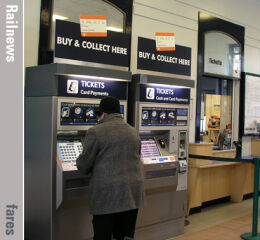Posted 20th August 2025
RPI at 4.8% sparks fears about 2026 fare increases

There are fears that regulated rail fares could be set to increase by 5.8 per cent in 2026, after it was revealed this morning that the Retail Prices Index for July was 4.8 per cent.
The July RPI is customarily used as the base for changes in rail fares the following year. Any alterations used to come at the start of January, but in recent times they have been put back to March.
It has also been usual in recent times to add a ‘real terms’ increase of 1 per cent, making a 5.8 per cent increase possible.
Regulated fares cover about 45 per cent of journeys, and they include most season tickets as well as some off-peak and Anytime tickets. Other fares, including First Class and Advance tickets, are decided by train operators in principle, with the approval of the Department for Transport.
The prospect of a 5.8 per cent increase next year has been criticised by the statutory watchdog London TravelWatch.
CEO Michael Roberts said: ‘Londoners are already feeling the pinch of the cost of living crisis and some of the most expensive public transport in Europe. They will be dismayed at the idea of an eye-watering 5.8 per cent hike in fares next year, not just for trains but also potentially for TfL’s bus and Tube services as well.
‘Government should think hard about whether it goes ahead with its plans to raise fares and should say when its rail reforms will deliver real improvements to services. And we look forward to seeing how TfL plans to keep its fares affordable for those who need it most, while also ensuring it is investing enough in the capital’s transport network.’
The Campaign for Better Transport is also concerned.
Chief executive Ben Plowden said: ‘Today’s inflation figure could mean a big fare rise for rail passengers next year, especially if the Government decides to go with an above-inflation increase like we saw this year. With the railways now moving under public control, the fundamental question for the Government is how to use its role in setting fares policy to deliver a more affordable rail network and encourage more people to travel on it. Next year’s annual rise represents the first real opportunity for the Government to show passengers – both current and future – just how it plans to do this.’
The RPI is no longer recognised as an official statistic by the Office for National Statistics, which prefers the alternative Consumer Prices Index. This rose by 3.8 per cent in the year to July.
What do you think? Click here to let us know.
